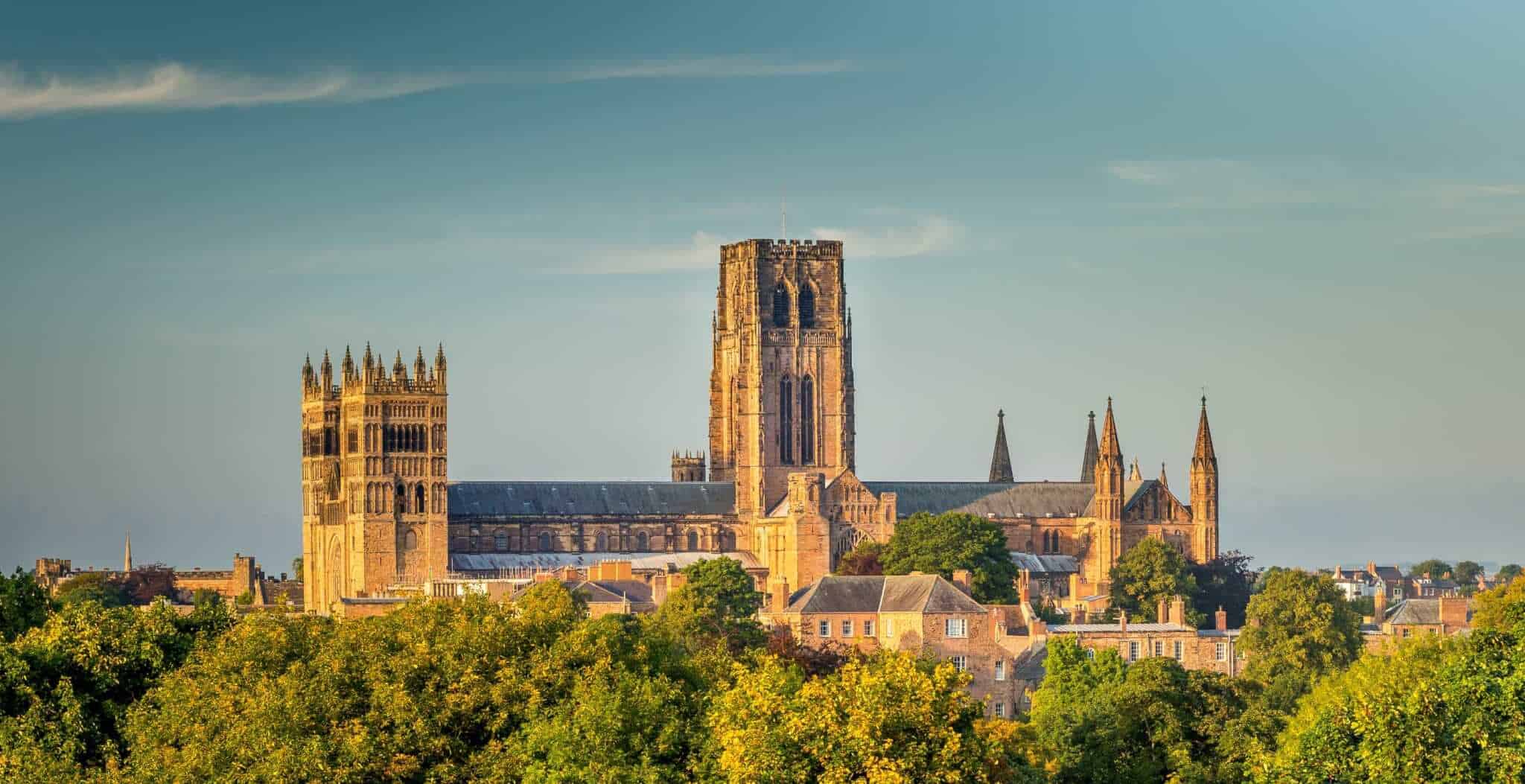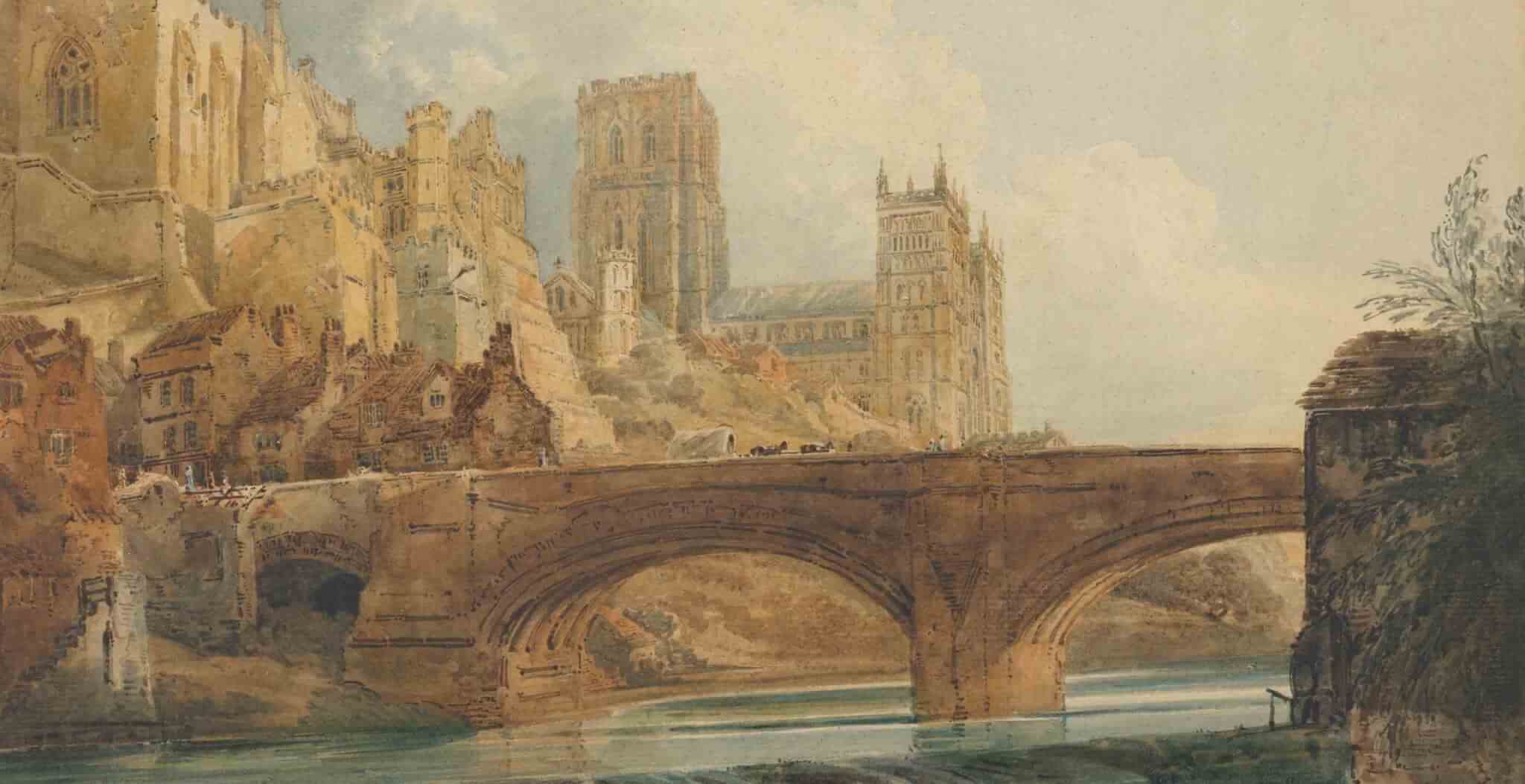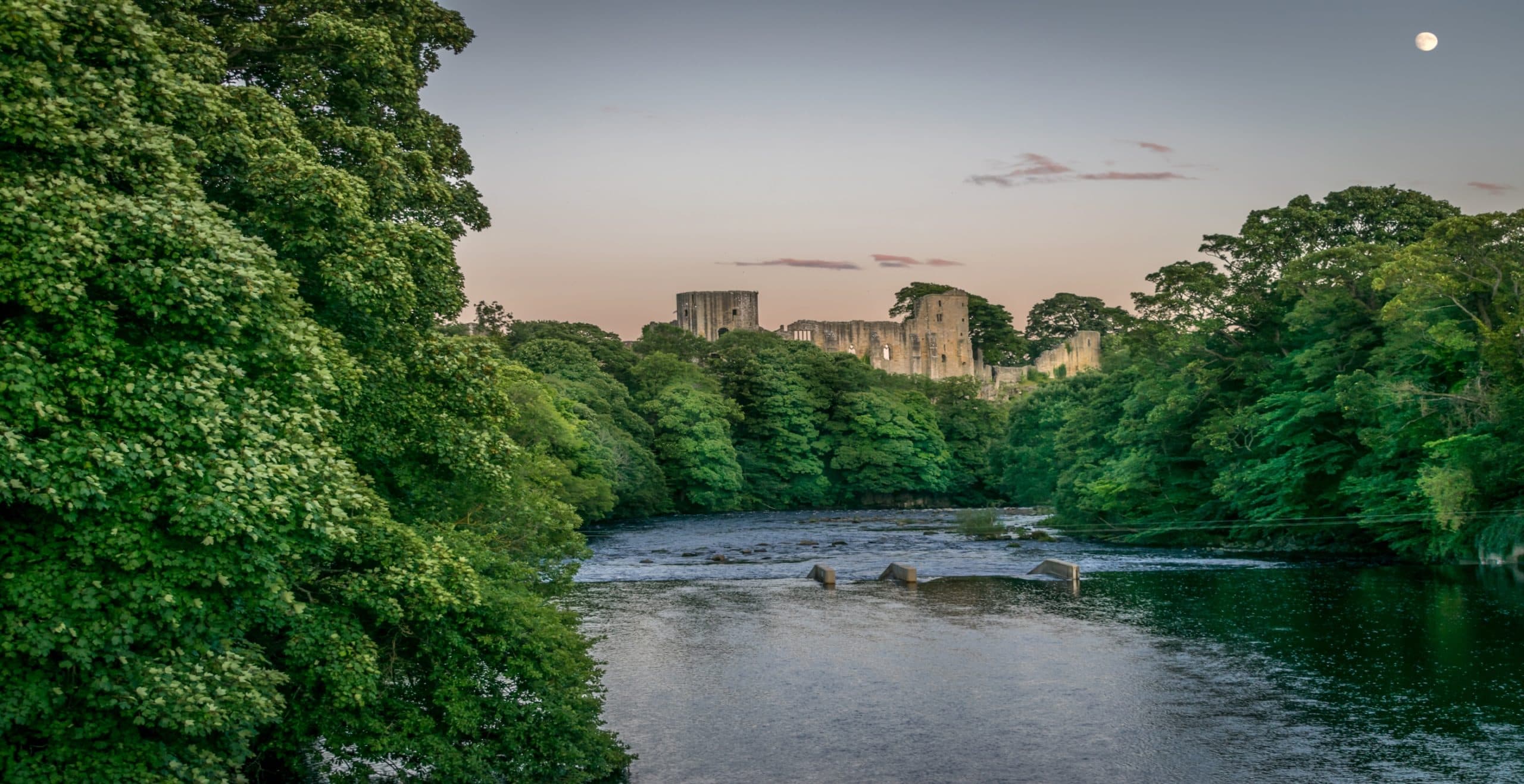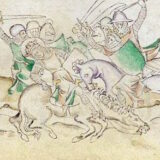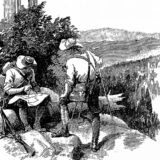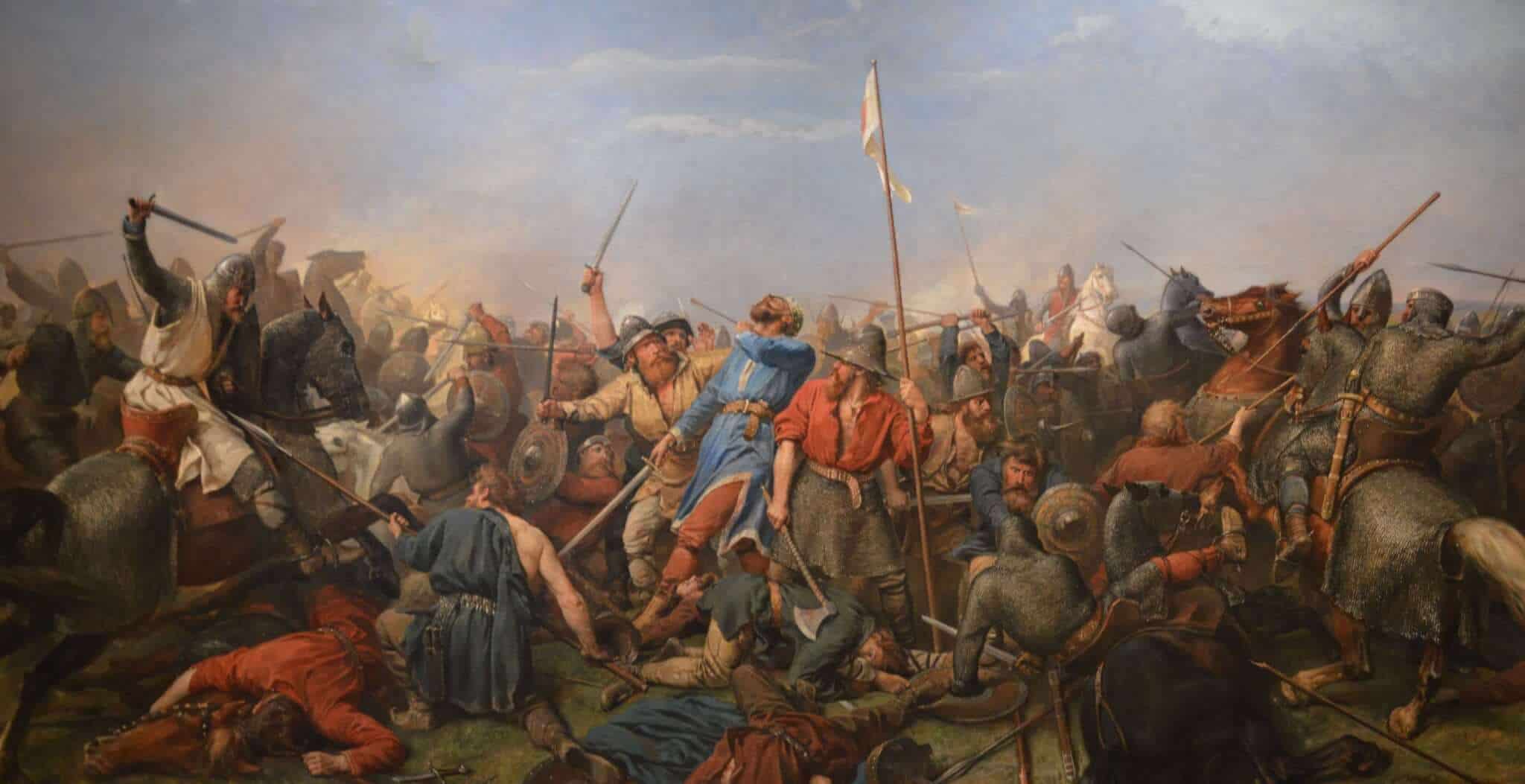The name “Durham” comes from the Old English word for hill, “Dun” and the Norse for island, “holme”. The legend of the Dun Cow and the milkmaid also contributes to the naming of this county town and Dun Cow Lane is said to be one of the first streets in the original city.
The legend follows the journey of a group of Lindisfarne monks carrying the body of the Anglo-Saxon Saint Cuthbert in 995 AD. It is told that while they were wandering in the north, Saint Cuthbert’s bier came to a halt on the hill at Warden Law and the monks could not move it any further, no matter how hard they tried. The Bishop of Chester-le-Street (where Saint Cuthbert had previously lain) called a three day holy fast and prayers for the Saint. Saint Bede recalled that during this time, Saint Cuthbert appeared before one of the monks, Eadmer, and told him that his coffin must be taken to “Dun Holm”. After this revelation, the coffin was able to be moved again but none of the monks had heard of Dun Holm or knew where to find it. But by chance, they met a milkmaid on Mount Joy, south east of the site of Durham, who was wandering, searching for her lost Dun Cow, which she had last seen at Dun Holm. Yes! Taking this as a sign from Saint Cuthbert, the monks followed the milkmaid who guided them to a “wooded hill-island formed by a tight gorge-like meander of the River Wear”, Dun Holm. When they arrived they built first a wooden and then a stone, structure of Durham Cathedral and around this the settlement grew. Dun Cow Lane follows from the East to the Cathedral in the current city, perhaps this marks the direction the monks first arrived from with the milkmaid?
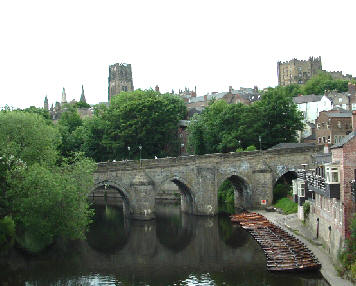
None of this survives today but is replaced by a striking and beautiful Norman building, with spiritual prominence through time. It is celebrated for its beauty and stature and featured in the recent Harry Potter films. In medieval times the city, built around the Cathedral, was revered as the last resting places for Saint Cuthbert and Saint Bede the Venerable, and became the subject of many pilgrimages. The shrine to Saint Cuthbert, situated behind the High Altar in the Cathedral, was the most important religious site in England before the martyrdom of St Thomas Becket.
Saint Cuthbert is so famed for his miraculous healing abilities; he became known as the “wonder worker of England”. This was not only in life but also in death; there are stories of visitors to his shrine being cured of a wide range of maladies. In 698 AD, the monks at Lindisfarne (where Saint Cuthbert lay at this point) wanted to construct a shrine to the Saint and wished to place relics of him in it. To do this, they obtained permission to open Saint Cuthbert’s stone tomb which had been sealed for eleven years. Obviously expecting to find nothing but his skeleton, the monks were surprised to discover that his body was immaculate, as if he were not dead but sleeping. Even his clothes were pristine and bright!
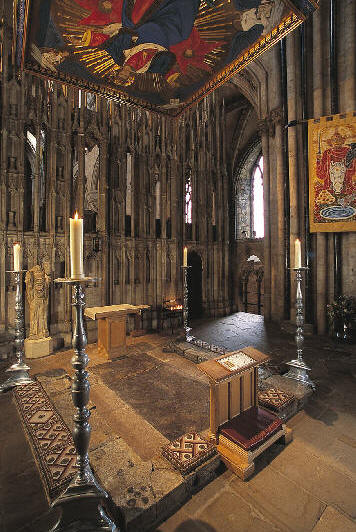
Not only is Durham an important religious site but also a defensive one. Situated high on a hill and protected by the river on three sides, Durham was important in defence against the Scots invading English lands. The Cathedral and Castle were built together by the community of Benedictine monks who wanted a monumental shrine for Saint Cuthbert and a place to live for the Bishop of Durham. The project of building the two structures was impressively ambitious, and the panoramic view of the Cathedral and Castle facing each other has been described as ‘one of the finest architectural experiences of Europe’. They are now united as a World Heritage Site.
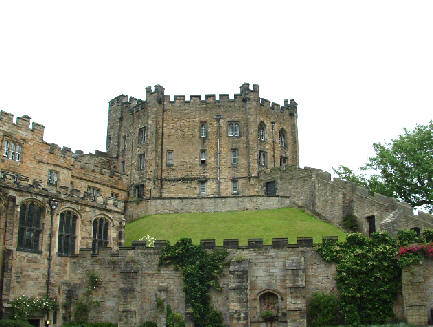
The most famous of battles fought at Durham was the Battle of Neville’s Cross in 1346. The English were preparing to wage war against the French (as part of the Hundred Year War) and the French were getting nervous! The old Scottish-French alliance was called upon by the French King Philip VI; he sent a plea for help to King David II of Scotland. King David, albeit a bit slow, rallied his army and set forth to capture England from the north; he assumed this would be fairly easy as the English troops would be tied up in the south preparing to invade France. But England had foreseen this and troops were waiting at Durham as the Scots swept through Liddesdale and Hexham (Carlisle paid protection money) towards Durham and Yorkshire. However, the Scots were right in that the English were indeed small in numbers; six to seven thousand English to the 12,000 Scottish that initially crossed the borders. Both armies started on the defensive so after a long period of stalemate, the English finally provoked the Scots forward and then obliterated them! Two thirds of the Scottish army fled and the final third eventually retreated and were chased for twenty miles.
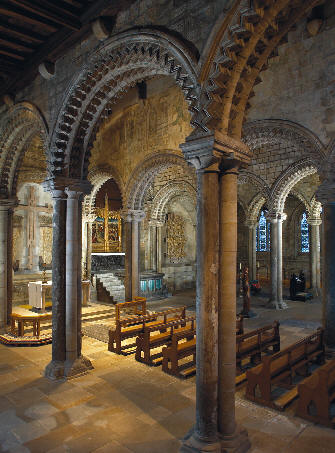
Presently, Durham Castle is home to students of Durham University as University College. The University is steeped in history and is the only University, other than Oxford and Cambridge, to operate the collegiate system in the UK. Several of the colleges have historical backgrounds, like the St Cuthbert’s Society and the College of St Hild and St Bede, keeping the past alive.
A thousand years of friendly pilgrims have given the city a reputation for hospitality and it is upheld by the relaxed atmosphere and traffic-free streets, allowing you to take your time in appreciating the city’s beauty. The river adds to the atmosphere; watch from the banks as the student team row past or jump aboard the river cruiser and see the city from a different angle. Although we can guarantee, whichever angle you take, this picturesque, quaint yet strong city won’t fail to impress.
Durham is easily accessible by both road and rail, please try our UK Travel Guide for further information.
Tours of Historic Durham
Find out more about this great city by browsing our Selected Tours of Durham.
